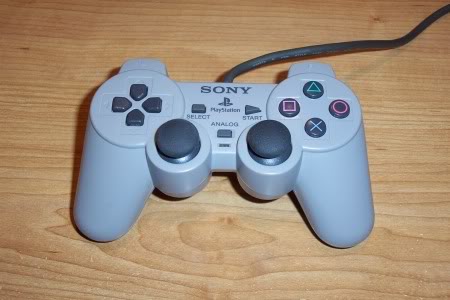David Jaffe was at Sony’s publishing arm at the time, and he was like, yeah, we went from supporting other machines, to basically creating content for this new machine. And everybody I’ve talked to has mentioned the delivery medium. The shift from cartridge to disc.
Oh yeah, that was huge.
Hindsight is 20/20 now, but is there anyway you can talk about what the risk/reward factor was at that time?
I’m not sure there was a whole lot of risk other than they were going up against two giants at the time which was Sega and Nintendo. That was the biggest risk factor. But I think obviously Sony knew they had something special back in the Ken Kutaragi days. He knew he had something special because you could put so much more content on the disc. I didn’t even mention the controller, which in itself was a revolution as well. A lot of people talk about it just being, at a time back when Playstation 1 was launched, that it was just a revision of current controllers, but the fact that you had two analog sticks, that was a big deal. A big deal, yeah.
And I think that really also opened up the whole idea of “move with the left stick, control the camera with the right stick.” It just has become such a standard in gaming now and it’s been that way for a long time.
Was there any particular title from the launch library for PS1 that you felt captured the hearts and minds of the audience that Sony was going for?
So, again, I’m coming at this from a totally different perspective. Back at that time, I was almost completely focused on sports. When I left Sega, I was running their Sega Sports Group. When Sony came out with GameDay, it was really the first, truly 3D football game, one that really changed the way that all gamers looked at sports. It went from, oh, just a 2D representation of guys running east and west on your TV screen, to wow, I can change it to any camera angle I want and I really can feel those hits, I can see the holes opening in the line. It really opened up all sorts of new worlds for 3D sports gaming, and I think that was a key, key title back in the day.
Interesting. At what point did you get the sense that Sony stopped worrying about the PS1 and knew that they were in the game for a long haul?
I wasn’t with the company at the time, but I think that happened pretty early on in the cycle. I think once they established a few of those early hits like the Crash Bandicoots of the world.
I mean, there’s all sorts of games like that where people realized “OK, this is a truly 3D game, these guys are here to stay.” From my perspective at the time, on the outside, Sony seemed to realize that they can do whatever we want in this space. I honestly don’t think they were worried about, could they exist in this space anymore? I think at that point they started thinking about, we’re pretty sure we can take this space over. And that’s exactly what happened with the Playstation 2.
So you became a developer during the PS1 days, correct?
During the PS1 days, that’s when Sega was transitioning. It was an interesting time for Sega. So they were trying to figure out if they were a hardware company or a software company. And that’s about the time that I left.
I became a developer, like you said. So, during that time, I worked on several projects with companies like EA. Did some Playstation 1 sports games, some Playstation 2 sports games, and that transitioned into some first-party work with Sony doing some first-party sports games, which eventually led me to San Diego.


